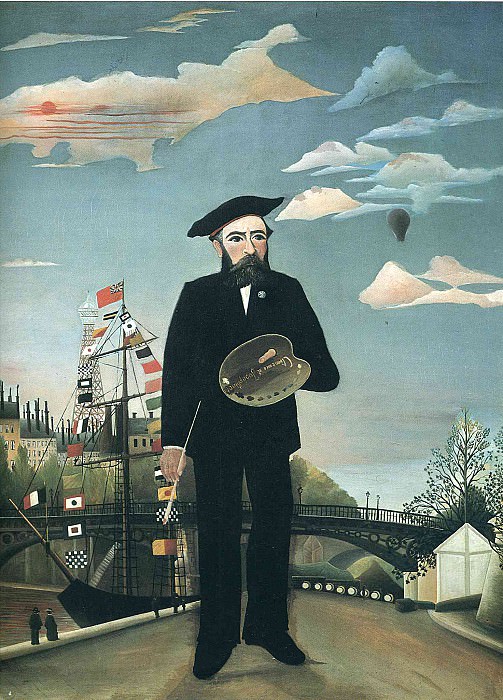Rousseau (19) Henri Julien Felix Rousseau (1844-1910)
Henri Julien Felix Rousseau – Rousseau (19)
Edit attribution
Download full size: 1473×2051 px (0,2 Mb)
Painter: Henri Julien Felix Rousseau
Rousseau was a primitivist - he became an artist without any additional training, simply because he felt an inner urge. He had no teacher to show him the basics, and by trying, making mistakes, he discovered painting as an entirely new science, like alchemy. Where others had long passed without stumbling, he found new holes and fell on old bumps. Walking his way alone, he came to post-impressionism, in which primitivism looked not like an ugly encroachment on art (a primitivist-realist would look exactly like that), but like a logical development of the thought contained in it. After all, post-impressionism did not cling to a momentary feeling or to the fullest possible reflection of reality, but to the search for the basis of existence, the only answer to all questions.
Description of Henri Rousseau’s painting "Self-Portrait" (Customs Officer)
Rousseau was a primitivist - he became an artist without any additional training, simply because he felt an inner urge. He had no teacher to show him the basics, and by trying, making mistakes, he discovered painting as an entirely new science, like alchemy. Where others had long passed without stumbling, he found new holes and fell on old bumps.
Walking his way alone, he came to post-impressionism, in which primitivism looked not like an ugly encroachment on art (a primitivist-realist would look exactly like that), but like a logical development of the thought contained in it.
After all, post-impressionism did not cling to a momentary feeling or to the fullest possible reflection of reality, but to the search for the basis of existence, the only answer to all questions. Just as mathematicians looked for a single formula for the universe that would explain everything, so the post-impressionists looked for that combination of movement and color. Trying all styles, mixing them and separating them back, they saw nothing wrong with primitivism.
Rousseau’s self-portrait differs from the portraits of his great predecessors. Those sought to portray themselves in as much detail as possible, so that posterity would not forget their appearances, whereas Rousseau portrayed himself almost satirically, as if joking kindly with himself. After all, officially, he was not an artist, but a customs officer, and that is how he is depicted - in the port, at the arriving steamer, decorated with colored flags.
Behind him is a bridge, a lonely man meets the steamer, the sky is all in clouds and a lonely airship flies across it. The sun is hidden, sending straight red glare, the city is visible in the distance, and Rousseau stands in the middle of everything, dressed in a dark suit, and holding a palette and brush - as if to symbolize his dream, which he himself has made into a reality for himself.
Кому понравилось
Пожалуйста, подождите
На эту операцию может потребоваться несколько секунд.
Информация появится в новом окне,
если открытие новых окон не запрещено в настройках вашего браузера.
You need to login
Для работы с коллекциями – пожалуйста, войдите в аккаунт (open in new window).




















You cannot comment Why?
Perhaps it’s a painting of a man in a black suit and hat holding a paddle in front of.